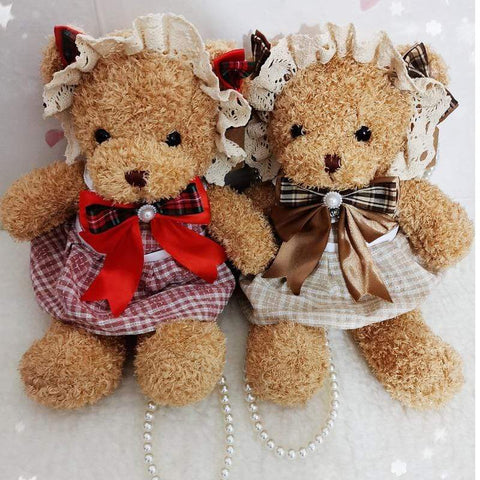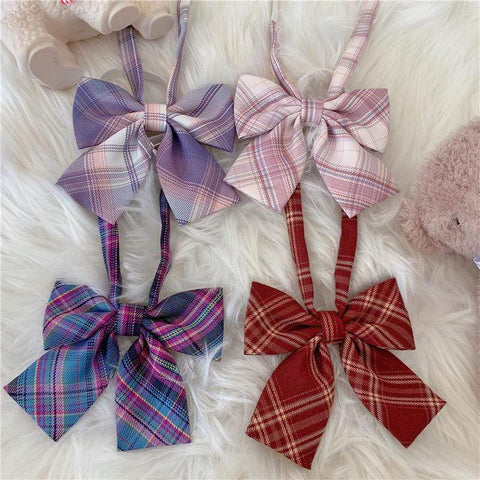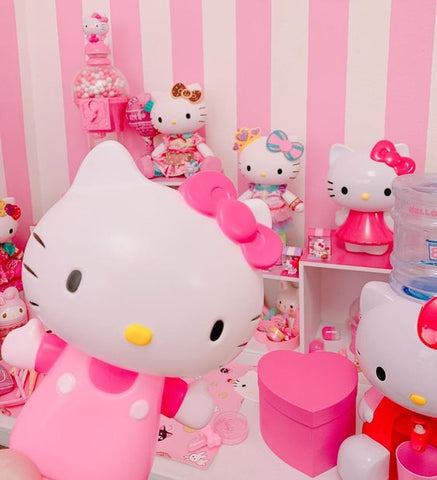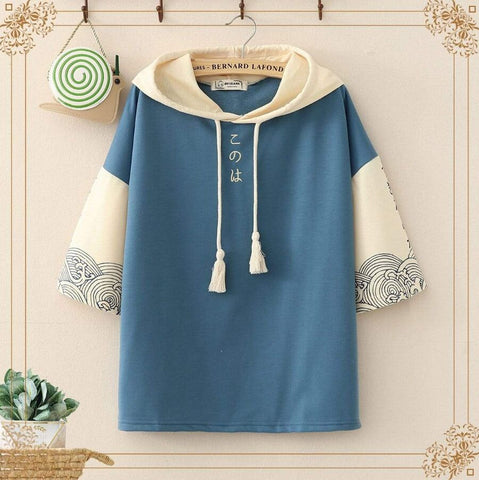What is Kawaii?- Exploring Japan's Kawaii Culture
Kawaii has gradually captured the hearts of people all over the world. It also means "cute" and "adorable" in the word. This fascinating concept has transcended mere aesthetics into a vibrant and beloved cultural expression. In a world bustling with technology, endless responsibilities, and fast-paced lifestyles, kawaii culture brings a ray of delightful charm and innocence. So, let us uncover the magic, the pleasure, and the immense joy it brings our lives!
The Enchanting Elements of Kawaii
Kawaii is more than just a simple concept. It encompasses a range of elements that contribute to its charm.
Fashion and clothing
Kawaii embraces uniqueness and creativity in style, allowing individuals to express their individuality through playful and cute outfits. From pastel colors and oversized hoodies to Lolita dresses, kawaii clothing has become a prominent trend in Japan and internationally.
Character Design
Iconic cute characters like Pikachu have become symbols of kawaii culture. These popular characters capture children's hearts and appeal to people of all ages worldwide. Lovers of these cute characters usually wear printed T-shirts, buy garage kits, or even hold cosplay events. Their charming designs evoke joy and bring a sense of innocence and happiness.
Kawaii merchandise
The world of kawaii extends beyond fashion and characters. It encompasses many adorable products, including hair accessories, toys, home decor, and kawaii food. These kawaii items also formed consumer subcultures. They are adorned with cute designs and vibrant colors, adding an element of delight and playfulness to everyday life.
Why do People Like Kawaii?
Kawaii characters and objects often embody innocence, purity, and simplicity. In a world that can sometimes feel overwhelming and complex, the cuteness of kawaii can provide a sense of comfort and escapism.
Cute styles tend to trigger a nurturing instinct in humans. The large eyes, small stature, and childlike features of kawaii characters can elicit feelings of protectiveness, empathy, and affection. This emotional response can create a sense of connection and attachment.
Interacting with or observing kawaii elements, such as plush toys, manga characters, kawaii clothing, or childlike handwriting, can relieve stressful times. The lighthearted and playful nature of kawaii can help reduce anxiety and provide a brief escape from the pressures of daily life.
Cute culture has become widely popular in various forms of media, including anime, manga, and video gaming culture. This exposure has contributed to its global appeal and has led to the adoption of kawaii elements in fashion, lifestyle products, and even marketing campaigns. The familiarity and widespread visibility of kawaii and harajuku further fuel its popularity.
For some adults in countries, embracing kawaii is a way to express their individuality, creativity, and personal style. They may incorporate kawaii elements into their fashion choices, accessories, or even their living spaces to self-express.
What is The Significance of Kawaii Culture in Japan?
Kawaii culture holds a significant place in Japanese culture and has various implications for Japanese people.
Kawaii's global influence through Japanese popular culture: Japanese popular culture, including anime, manga, and video games, has played a pivotal role in spreading the influence of Kawaii worldwide. These cultural exports have introduced kawaii aesthetics and characters to a global audience, fostering a fascination and admiration for Japanese cute culture.
Anime and manga(Ambassadors of kawaii worldwide): Japanese anime and manga have become ambassadors of kawaii culture with their distinct art styles and lovable characters. Through these mediums, Japan has captivated audiences worldwide, attracting fans who appreciate Kawaii characters' and stories' endearing and relatable nature.
The global phenomenon of Sanrio characters like Hello Kitty: Sanrio's iconic character, Hello Kitty, has become an international sensation, transcending cultural boundaries and capturing the hearts of millions. Hello Kitty's timeless charm and simplicity have made her a beloved symbol of kawaii culture. With her adorable bow and charming expression, Hello Kitty has become an international icon, adorning merchandise, clothing, and even theme parks. Her popularity exemplifies the global reach and impact of kawaii culture.
How Did Japan Develop Kawaii Culture?
The development of Japan's 'kawaii' culture can be traced back to multiple factors and historical influences.
Post-World War II Influence
After World War II, Japan experienced rapid economic growth and urbanization. This period brought significant societal changes, including the rise of consumer culture and a focus on materialism. Cute characters and products emerged as a response to the desire for comfort and escapism.
Youth Culture and Popularity
Kawaii culture gained particular traction among young people in Japan. The post-war economic boom in the 1980s provided more disposable income to Japanese youth, who embraced the kawaii aesthetic through fashion, music, and other forms of self-expression. Kawaii fashion styles, such as Lolita and Harajuku, emerged as unique subcultures that celebrated cuteness.
Manga and Anime
The growth of manga (comics) and anime (animation) in Japan also significantly developed Kawaii culture. Manga and anime characters are often featured as cute, lovable, captivating audiences of all ages.
Harajuku Fashion
Harajuku, a neighborhood in Tokyo, became synonymous with kawaii style in the 1980s. Adults expressed their individuality through vibrant and eclectic fashion styles, mixing cute elements with traditional and Western influences. This distinctive kawaii style gained attention and contributed to the global recognition of cute culture.
Kawaii Culture Goes Global
The influence of kawaii culture has extended far beyond Japan's borders, captivating people worldwide. Here are a few ways in which kawaii has made its mark globally.
The impact of kawaii can be observed in fashion trends worldwide, with socks, dresses, and outfits with ruffles embracing its adorable allure. Japanese style brands have ingeniously integrated charming motifs, while international fashion designers have found inspiration in the delightful aesthetics of kawaii. These playful and whimsical elements have successfully permeated mainstream fashion, creating a vibrant fusion of cuteness and style.
Anime and manga, with their endearing characters and captivating storylines, have gained immense popularity worldwide. The global success of anime franchises such as Pokémon, Sailor Moon, and Studio Ghibli films showcases the universal appeal of kawaii-inspired narratives and art styles.
Kawaii has evolved into a lifestyle and subculture that people in different countries embrace. Cute enthusiasts create unique kawaii-inspired spaces, decor, and outfits, fostering a sense of community and self-expression.
The concept of kawaii, or cute, has become an integral part of world culture, influencing various aspects of society and fashion. From adorable character-themed outfits to pastel colors and fluffy accessories, kawaii fashion allows individuals to express their playful and youthful side. By embracing cute clothing, people can bring joy and lightheartedness into their lives, fostering a connection to their inner child and embracing the beauty of simplicity.
Whether it's through donning kawaii clothing or surrounding ourselves with cute accessories, our store offers a haven for all things cute. With a variety of options that cater to different styles and preferences, we aim to provide a delightful shopping experience that captures the essence of kawaii culture. Embrace the power of cute and let it brighten your world!









